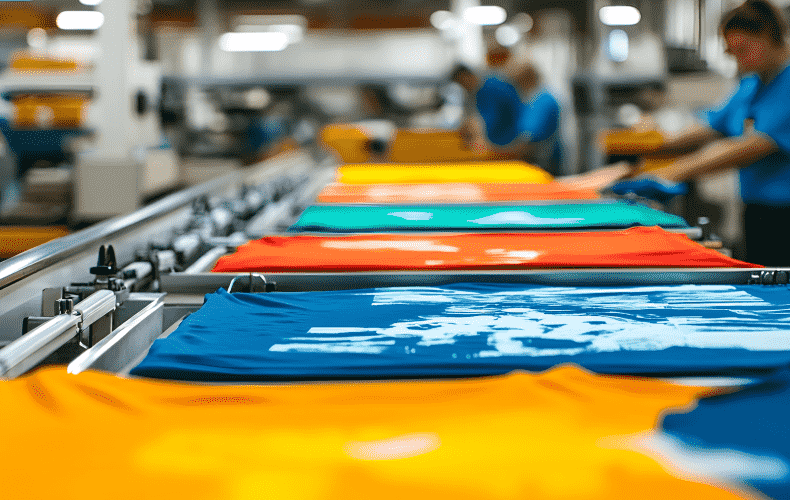
Ethical Innovation in iGaming: Why Social Responsibility is a Growth Driver for Soft2Bet
Section: Arts
The story is well known by now: because of a lack of semiconductors, the auto industry cannot produce and sell as many cars as it would like, which is why short-time work was introduced for the first time last December. In the meantime, however, the problem is growing. Minus 30.5 percent is the figure used to describe Mercedes' sales crisis in the third quarter; in Germany, as many as 47 percent fewer cars were delivered. In total, Mercedes sold just under 435,000 cars, while at the same time there is talk of robust demand and strong incoming orders.
To prevent the sales crisis from turning into an earnings crisis, the Stuttgart-based group has issued a clear strategy: the rare chips are distributed within the production network in such a way that priority is given above all to electric cars and, among the classic combustion engine cars, to the most profitable models - and that means: luxury is trumps.
This strategy can be seen very clearly in the sales figures. Since the beginning of the year, for example, Mercedes has increased sales of plug-in hybrids and pure electric cars of the EQ brand by 143 percent to 184,000 units, with almost half of EQ sales attributable to the particularly difficult third quarter. That said, the flagship EQS, which costs more than 100,000 euros even in its basic configuration, is still barely included in the figures, having only been launched in August.
Among the combustion models, the S-Class stands out, increasing sales by 45 percent year on year to 62,300 units. For the AMG models, which are also very profitable, Mercedes reports a sales increase of 31 percent (116,000 cars), and the G-Class comes in at just under 30 percent (32,000 cars). Overall, Mercedes sales since the beginning of the year are 3 percent higher than last year, which can also be explained by a base effect: Last spring, production and sales in the auto industry worldwide were at a standstill for weeks due to the Corona pandemic; compared to this, sales in the first half of 2021 were significantly higher. In the third quarter, this mathematical effect does not apply because car sales were characterized by catch-up effects after the lockdown last year.
Mercedes does not traditionally report details on the individual models. However, the strategy means that compact cars tend to be given lower priority in production planning, resulting in correspondingly long waiting times, sometimes of well over a year, as Daimler CEO Ola Källenius recently confirmed in an interview with the FAZ: "Yes, demand is enormous at Mercedes-Benz, and at the same time there are unfortunately severe restrictions at the moment. For some models, the waiting times are therefore longer than we would like, in some cases even more than a year." Customers who don't want to wait that long are sometimes offered by Mercedes the chance to get their car in a slimmed-down version (for example, with a simpler navigation or sound system) at a correspondingly adjusted price. Those who do not agree to this can cancel their order, Daimler says.
"In production, we sometimes have to prioritize," Källenius explained the strategy in an interview with the FAZ: "We always have three things in mind: first and foremost, our customers. But we also pay attention to our profitability and to pushing ahead with our electric offensive. We will do everything we can to reduce waiting times when the situation stabilizes again."
He added that he hoped the semiconductor bottleneck would bottom out in the third quarter. Most recently, he said, the shortage has been exacerbated by the closure of some chip factories in Malaysia because of Corona - something that is difficult to predict. The structural issue that there are fundamentally too few semiconductors will continue in 2022, he said, and the situation could ease in 2023.
The Mercedes boss sees one way of responding to the chip shortage in working with suppliers to switch certain products to a newer generation of chips that are not affected by bottlenecks. "At the moment, it's not the absolute high-tech chips that are lacking, but primarily those in the 30 to 200 nanometer range - this is technology that was developed several years ago," Källenius pointed out in an interview with the FAZ.

Section: Arts

Section: Arts

Section: News

Section: Arts

Section: Business

Section: Arts

Section: Arts

Section: Business

Section: Business

Section: Arts
Health Insurance in Germany is compulsory and sometimes complicated, not to mention expensive. As an expat, you are required to navigate this landscape within weeks of arriving, so check our FAQ on PKV. For our guide on resources and access to agents who can give you a competitive quote, try our PKV Cost comparison tool.
Germany is famous for its medical expertise and extensive number of hospitals and clinics. See this comprehensive directory of hospitals and clinics across the country, complete with links to their websites, addresses, contact info, and specializations/services.
The couple Eva-Maria and Berthold Schneider has enthusiastically and expertly built an exquisite collection of Greek vases and other works of ancient small art over the years. Personal preferences often played a role in the acquisition of pieces. For instance, a rare oil vessel dating back to around...



No comments yet. Be the first to comment!